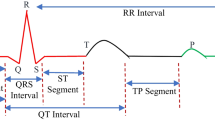Abstract
In today’s world, wearable devices have become a key device in monitoring all internal activities of human being with the help of sensors. Humans are provided with a wristband device fabricated with various sensors to detect overall body condition in every day-to-day activity. Most of the wearable devices can be used to monitor the beats per minute (BPM) by heart rate sensor (pressure sensor), sleep and body movement activity by three-axis accelerometer sensor, the respiratory rate by biosensors and electrocardiogram (ECG) by sensors (electrodes). It is well known that soon in the near future, all sensors related to human activity and health monitoring play a major role in human beings; especially, for old age people, the wearable devices with well-packed sensor will soon be reaching out the market. The most wearable devices are able to provide almost all sensors in a single package, but fail to work if the power goes off shortly. The proposed model makes an attempt to reduce the power consumption in the wearable device by introducing the programmable clock frequency with machine learning concept. To reduce the power consumption in wearable devices, a programmable clock frequency of 1 GHz has been designed and monitored on a monthly basis. The proposed work uses different frequencies based on different activities of wearable device with generated data set of machine learning algorithms and is analysed using PYNQ boards. The proposed work concludes based on the multilinear-based regression model to check the power consumed for the given parameters observed that step count consumes 96% power during the complete analysis.
Access this chapter
Tax calculation will be finalised at checkout
Purchases are for personal use only
Similar content being viewed by others
References
Fengou, M.-A., Mantas, G., Komninos, N.: A new framework architecture for next generation e-health services. IEEE J. Biomed. Health Inform. 17(1) (2013)
James, R., Stanley, M., Laiwah, A.: Monitor an expert system that validates and interprets time-dependent partial data based on a cystic fibrosis home monitoring program. IEEE Trans. Bio Med. Eng. 36(5) (1989)
Verma, P., Sood, S.K.: Fog assisted-IOT enabled patient health monitoring in smart homes. IEEE Internet Things J. 5(3) (2018)
Barger, T.S., Brown, D.E., Alwan, M.: Health-status monitoring analysis of behavioural patterns. IEEE Trans. Syst. MAN Cybern. Part A Syst. Humans 35(1) (2005)
Wang, J., Zhang, Z., Lee, S., Simon, R.: An Enhanced fall detection system for elderly person monitoring using consumer home networks. IEEE (2014)
Branko, G., Ross, S.: Home telemonitoring of vital signs-technical challenges and future directions. IEEE J. Biomed. Health Inform. 19(1) (2015)
Merilahti, J., Viramo, P., Korhonen, I.: Wearable monitoring of physical functioning and disability changes, circadian rhythms and sleep patterns in nursing home residents. IEEE J. Biomed. Health Inform. 20(3) (2016)
Chandra, S.: Wearable sensors for human activity monitoring: a review. IEEE Sens. J. 15(3) (2015)
Junnila, S., Kailanto, H., Merilahti, J., Vainio, A.M., Vehkaoja, A., Zakrzewski, M. and Hyttinen, J.: Wireless, multipurpose in home health monitoring platform: two case trials. IEEE Trans. Inform. Technol. Biomed. 14(2) (2010)
Yan, H., Huo, H., Gidlund, M: Wireless sensor network based e-health system- implementation and experiment results. IEEE Trans. Consum. Electron. 56(4) (2010)
Austin, J., Dodge, H.H., Riley, T.: A smart-home system to unobtrusively and continuously assess loneliness in older adults. Point Care Technol. 4 (2016)
Skubic, M., Guevara, R.D., Rantz, M.: Automated health alerts using in-home sensor data for embedded health assessment. Wearable Sens. Health Monitor. Syst. 4 (2015)
Lasierra, N., Alesanco, A., Garcia, J.: Designing an architecture for monitoring patients at home: ontologies and web services for clinical and technical management integration. IEEE J. Biomed. Health Inform. 8(3) (2014)
Quer, G., Nikzad, N., Chieh, Normand, A.A.: Home monitoring of blood pressure: short-term changes during serial measurements for 56398 subjects. IEEE J. Biomed. Health Inform. 22(5) (2018)
Arpaia, P., Manna, C., Montenero, G., Addio, G.D.: In-time prognosis based on swarm intelligence for home-care monitoring: a case study on pulmonary disease. IEEE Sens. J. 12(3) (2012)
Fleury, A., Vacher, M., Noury, N.: SVM-based multimodal classification activities of daily living in health smart homes: sensors, algorithms, and first experimental results. IEEE Trans. Inform. Technol. Biomed. 14(2) (2010)
Author information
Authors and Affiliations
Corresponding author
Editor information
Editors and Affiliations
Rights and permissions
Copyright information
© 2021 Springer Nature Singapore Pte Ltd.
About this chapter
Cite this chapter
Ajin Roch, A., Karthik, S., Arthi, R. (2021). Dynamic Programmable Clock Frequency Using Machine Learning Algorithms to Reduce Power Consumption in Wearables. In: Bhoi, A., Mallick, P., Liu, CM., Balas, V. (eds) Bio-inspired Neurocomputing. Studies in Computational Intelligence, vol 903. Springer, Singapore. https://doi.org/10.1007/978-981-15-5495-7_19
Download citation
DOI: https://doi.org/10.1007/978-981-15-5495-7_19
Published:
Publisher Name: Springer, Singapore
Print ISBN: 978-981-15-5494-0
Online ISBN: 978-981-15-5495-7
eBook Packages: Intelligent Technologies and RoboticsIntelligent Technologies and Robotics (R0)




